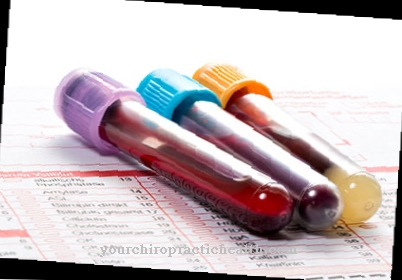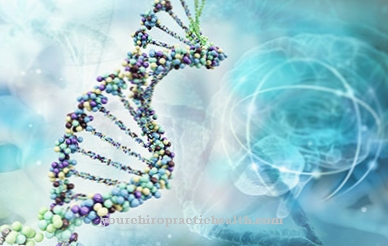Gout is a serious systemic disease that has been known for generations. It affects and destroys joints and skin. Fortunately, thanks to early therapy, it has now become very rare in this severe form. But what is still common is that acute gout attack, often the first symptom of a disorder of uric acid metabolism. It manifests itself with a painfully swollen toe, usually after barbecues with a lot of alcohol consumption.
What is an acute gout attack?

During an acute attack of gout, a short-term overload of the body with uric acid leads to the failure of uric acid crystals in joint spaces.
In the vast majority of cases, the metatarsophalangeal joint of the big toe is affected, which is noticeable in the form of sudden swelling, reddening and severe pain. The gout attack is thus an expression of the derailment of an already elevated uric acid level, which should subsequently be treated permanently.
causes
Uric acid is an end product from the metabolism of purines, part of our DNA. This also explains why acute gout attacks often occur after barbecues:
Above-average meat consumption overloads the body with purines for a short time (after all, animal meat also consists of DNA), alcohol consumption with grilled meat also occupies the liver, and the uric acid level rises above the threshold.
It mostly affects men who are woken up early the next morning by the pain in their big toe. Uric acid crystals have accumulated there overnight, because when the uric acid turns into crystals and disappears from the bloodstream, it can no longer cause any greater damage to the rest of the body.
Incidentally, the uric acid level in the blood was already too high in most of those affected, but was not noticed: the so-called hyperuricemia does not cause any symptoms for a long time. It can be the result of genetic predestination, a deficient function of the kidneys or excessive uric acid production, the latter among other things in tumor diseases with an increased rate of cell division. Medicines such as Diuretics can affect uric acid levels.
Symptoms, ailments & signs
In the early stages of gout there are often no symptoms at all. In some cases this asymptomatic phase lasts for several years or even decades. During this period, without the patient noticing, the level of uric acid in the blood increases, which leads to hyperuricemia.
If the uric acid concentration exceeds a critical value, this leads to symptoms. This leads to the formation of uric acid crystals, which are deposited within the joints, which in turn threatens an acute attack of gout. The base joint of the big toe is particularly affected.
Typical of an acute gout attack is that it occurs suddenly and without any warning. In the middle of the night or early in the morning, severe attacks of pain suddenly appear. The affected joint is extremely sensitive to touch and movement. In addition, it swells up doughy and reddened. It also suffers from overheating. It is not uncommon for an acute attack of gout to be accompanied by a fever.
The affected person suffers from the symptoms of an acute gout attack for several hours or even a few days. If there is no medical treatment, the seizures occur at ever shorter intervals. In addition, there is a risk that they will spread to other joints. It is not uncommon for the knee joint, the ankle joint, the thumb joints or the metatarsal joints to be affected by the pain. In the further course, the gout can become chronic.
Diagnosis & course
In complete health, an acute attack of gout suddenly leads to inflammation of the metatarsophalangeal joint of the big toe, and more rarely of the ankle, knee or metacarpal joint of the thumb. The duvet is often not bearable.Other symptoms besides swelling, redness and pain generally do not exist, and after a few days to three weeks the symptoms subside on their own.
Complications
An acute attack of gout requires medical treatment. If the symptoms are treated incorrectly or ignored, far-reaching complications can result. Gout affects the joints. The affected area swells a lot and there are strong bouts of pain. Different inflammatory reactions such as overheating and reddening of the joint as well as fever are further consequences of symptoms depending on the advanced stadium.
Soft tissue nodes and visible joint deformations appear, which can increase to the point of being unable to move. The disease is based on a purine metabolic disorder, which negatively affects uric acid levels and can affect people of all ages. Usually it is only discovered and treated in the later years of life.
If the gout has progressed too far, the X-ray shows crystal deposits that can affect the entire body and organs. This type of gout tophi is rare. As a very serious complication of untreated gout attacks, the uric acid level can rise so that the kidneys are permanently impaired in their function.
Uric acid crystals are deposited in the kidneys and there is a risk of kidney stones. In the worst case, failure of function. If the patient is receiving medical treatment, the acute attack of gout can subside relatively problem-free. However, there is always the risk of a new outbreak. With a healthy lifestyle and the right medication, most complications and pain can be avoided.
When should you go to the doctor?
If, in addition to the typical joint pain and overheating, symptoms such as high fever, severe malaise and vomiting occur during an acute gout attack, a doctor should be consulted. In the event of a severe attack of gout, the uric acid level may be greatly increased, so that uric acid crystallizes in the joints, bursae, in the subcutaneous fatty tissue and in the medulla of the kidneys.
This is the case if a concentration of more than eight milligrams per deciliter of blood is found. The uric acid stones that form damage the kidneys in untreated and frequently recurring attacks of gout; in rare cases this can lead to kidney failure. After checking the uric acid levels, the doctor will prescribe anti-inflammatory pain relievers as well as uricostatic drugs to inhibit uric acid formation and uricosuric drugs, which promote the excretion of uric acid.
The medical treatment of gout by the family doctor is sufficient for diagnosis and therapy. If the symptoms persist or if it is not possible to lower the uric acid level permanently, it can be useful to consult a nutritionist. This helps in putting together a low-purine menu that is essential for preventing gout attacks.
Doctors & therapists in your area
Treatment & Therapy
If you don't want to wait that long, you should see a doctor. This can determine the uric acid level in the blood (which, paradoxically, is often not even increased in an acute attack) and then treat it with suitable pain medication such as diclofenac based on the very typical symptoms.
Colchicine is another possible drug, which normally works excellently in the case of gout attacks and thus "retrospectively" secures the diagnosis. However, due to possible side effects, it is only a second choice. Glucocorticoids such as prednisone are also possible variants in the therapy of acute attacks.
Outlook & forecast
Anyone who suffers from acute gout attacks can expect the strong sensitivity to touch as well as fever and the general feeling of illness to increase.
Therefore, increasing headaches, high pulse rates and vomiting are not uncommon in people with acute gout attacks. Kidney stones can occur despite diet changes and drug treatment. Especially when the uric acid level is above 9mg / dl.
If there are already bony changes (deformations or stiffening) in the joints, restrictions of movement up to disability and kidney damage (gouty kidney), which in the worst case must be treated with dialysis, cannot be ruled out. Damage to the skin increases the more frequently the gout attacks occur.
The prognosis also includes the possibility of high blood pressure and high blood sugar levels. This addresses the metabolic syndrome, in connection with which an acute gout attack can often occur.
The prognosis depends on the time of diagnosis as well as the course of the illness, the therapy and also to a large extent on the cooperation of the patient - especially with regard to diet changes, abstinence from alcohol and more exercise.
prevention
So that an acute gout attack does not turn into chronic gout in the long run, preventive measures and long-term drug therapy are the most important measures.
First of all, a diet is in the foreground, with weight normalization and sufficient amounts of water to drink, low-meat diet (in order to minimize the ingested purines) and avoiding alcohol. Hard fare for a bon vivant - but chronic gout with permanent joint and bone destruction and the breakdown of uric acid crystals through the skin can and should only be prevented in this way.
Regular control of the uric acid level by the family doctor is essential for monitoring the therapy. Only when the level rises above 9 mg / dl should you also take medication: Allopurinol is one of the most frequently prescribed drugs in general practitioners' practices and can reduce the amount of uric acid in the metabolism.
However, like any other drug, it has potential side effects and should therefore only be started when conservative measures (i.e. the tiresome diet) have failed. Then it can still contribute to a drop in uric acid levels and prevent the progression of gout and other painful attacks.
You can do that yourself
In order to be able to react in an emergency, those affected should always carry their prescribed pain relievers (e.g. diclofenac or colchicine) with them. If the first symptoms appear, a doctor should be consulted immediately.
In order to prevent an acute gout attack from developing into chronic gout in the long term, there are a number of preventive measures in addition to long-term medical treatment. The focus is on a balanced diet. Dieting may need to be considered to return to normal weight.
The diet should therefore be as healthy as possible. It is advisable to consume plenty of fresh fruit and vegetables. On the other hand, finished products or fast food should be avoided. Furthermore, care should be taken to ensure that sufficient fluids (ideally water) are consumed in order to stimulate kidney activity. This accelerates the breakdown of excess uric acid.
In any case, the person affected should eat as little meat and fat as possible. Due to the relatively high purine content of meat, its consumption contributes to an increase in uric acid levels. This is particularly important in the case of a hereditary predisposition. Various foods, such as Lemon juice, apple cider vinegar, olive oil, but also baking soda or wheatgrass juice, can be beneficial in lowering uric acid levels.
Lots of exercise can help optimize body weight. Excess fatty tissue can also increase uric acid production. In addition, it is essential to refrain from alcohol.



.jpg)









.jpg)

.jpg)
.jpg)











.jpg)